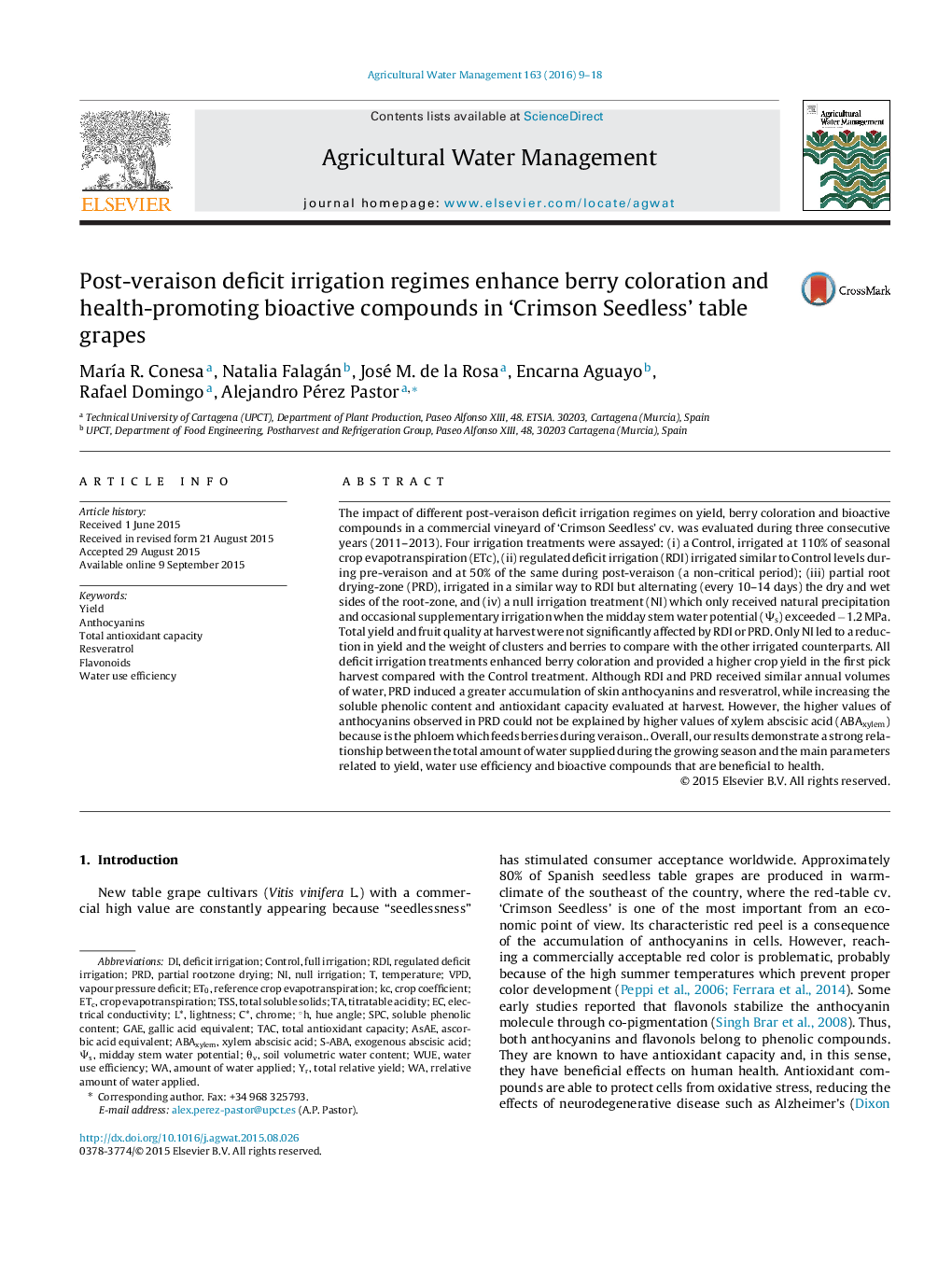| Article ID | Journal | Published Year | Pages | File Type |
|---|---|---|---|---|
| 4478332 | Agricultural Water Management | 2016 | 10 Pages |
•PRD and RDI applied 35% less water than Control without compromising total yield or berry quality.•Berry coloration increased in all deficit irrigation treatments (NI, PRD and RDI).•PRD presented the highest values of anthocyanins, antioxidant capacity and resveratrol.•There is not a link from the ABAxylem and anthocyanins content after veraison.
The impact of different post-veraison deficit irrigation regimes on yield, berry coloration and bioactive compounds in a commercial vineyard of ‘Crimson Seedless’ cv. was evaluated during three consecutive years (2011–2013). Four irrigation treatments were assayed: (i) a Control, irrigated at 110% of seasonal crop evapotranspiration (ETc), (ii) regulated deficit irrigation (RDI) irrigated similar to Control levels during pre-veraison and at 50% of the same during post-veraison (a non-critical period); (iii) partial root drying-zone (PRD), irrigated in a similar way to RDI but alternating (every 10–14 days) the dry and wet sides of the root-zone, and (iv) a null irrigation treatment (NI) which only received natural precipitation and occasional supplementary irrigation when the midday stem water potential (Ψs) exceeded −1.2 MPa. Total yield and fruit quality at harvest were not significantly affected by RDI or PRD. Only NI led to a reduction in yield and the weight of clusters and berries to compare with the other irrigated counterparts. All deficit irrigation treatments enhanced berry coloration and provided a higher crop yield in the first pick harvest compared with the Control treatment. Although RDI and PRD received similar annual volumes of water, PRD induced a greater accumulation of skin anthocyanins and resveratrol, while increasing the soluble phenolic content and antioxidant capacity evaluated at harvest. However, the higher values of anthocyanins observed in PRD could not be explained by higher values of xylem abscisic acid (ABAxylem) because is the phloem which feeds berries during veraison.. Overall, our results demonstrate a strong relationship between the total amount of water supplied during the growing season and the main parameters related to yield, water use efficiency and bioactive compounds that are beneficial to health.
